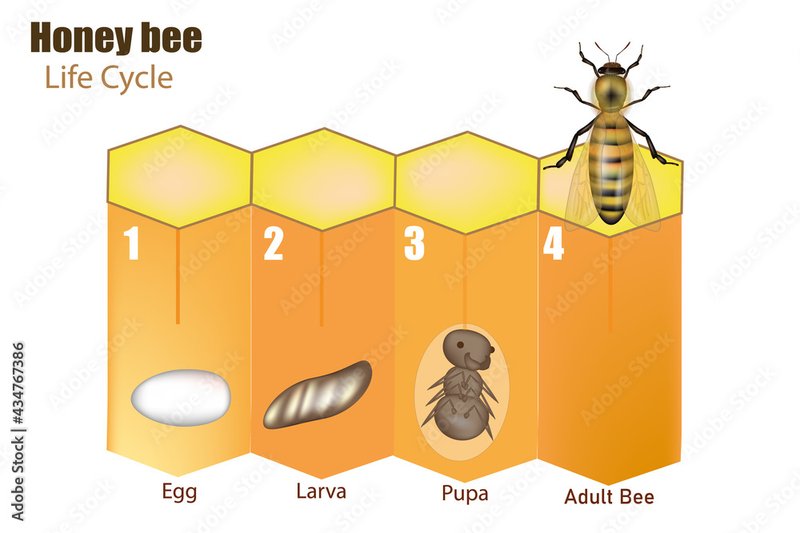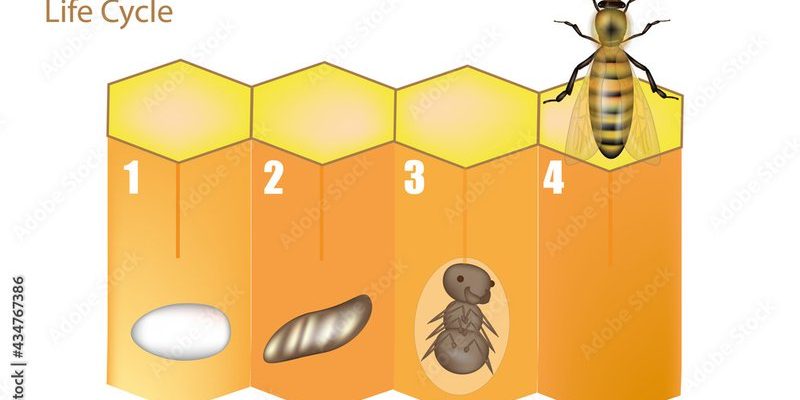
In this article, we’re going to explore how bees develop from eggs into buzzing adults. We’ll break it down step by step, so whether you’re a budding bee enthusiast or just curious about these essential pollinators, you’ll get a clear picture of their lifecycle. Plus, we’ll add some interesting facts along the way that might just surprise you!
Stage 1: The Egg
Every bee’s life begins as an egg. This tiny, pearlescent oval is laid by the queen bee in a specially prepared cell in the hive. You might be wondering just how small these eggs are. Well, they’re about the size of a grain of rice! After the queen lays her eggs, they’re kept warm by the worker bees, who create a cozy environment in the hive.
Eggs typically hatch within three days. Once they do, they transform into larvae that are quite different from what we usually imagine a bee to look like. It’s an exciting time for the hive! The workers care for these larvae by feeding them a special diet. Depending on the type of bee, their future role in the hive will be determined by their initial feeding. Isn’t that fascinating?
Stage 2: The Larva
Once the eggs hatch, the larvae emerge, resembling tiny white worms. This stage lasts about six days, and it’s all about growing. The worker bees feed them a diet of royal jelly, honey, and pollen. Here’s the thing: what they eat during this stage has a huge impact on their future roles.
If a larva is fed royal jelly exclusively, it will grow into a queen bee. If it’s fed a mix of honey and pollen, it will become a worker bee. And if it gets less food, it may develop into a drone, or male bee. This is nature’s way of ensuring that each bee has its place and function in the hive. It’s a bit like how different nutrients can impact our growth too!
Stage 3: The Pupa
After the larvae stage, the bees enter the pupal phase. This is kind of like a cozy cocoon period. The pupae are no longer fed but are instead developing inside a protective cell. During this time, their bodies are going through a massive transformation. They lose their larval features and start forming wings, legs, and other adult structures.
This stage can last anywhere from 12 days for workers to 16 days for queens, depending on their type. During this time, they’re basically gearing up to emerge as fully formed bees. Isn’t it amazing how much change happens while they’re hidden away? Just like how caterpillars morph into butterflies, these little guys are preparing for their debut too!
Stage 4: The Adult Bee
Finally, after days of transformation, the adult bee emerges from its cell. This is an exciting moment! When they first come out, these adult bees are still a bit soft and vulnerable. They’ll spend the first few days of their life resting and gaining strength before they head out into the world.
Once they’re ready, adult bees take on various roles within the hive. Worker bees manage foraging, nest cleaning, and feeding the young, while drones focus on mating. The queen, of course, has her prime duty—laying more eggs! You might not think much about it, but these roles are essential for maintaining a thriving hive. Each bee plays its part to keep everything running smoothly.
The Importance of Bees
As you can see, the lifecycle of a bee is not just a series of stages but a complex and vital process. Bees are essential pollinators and play a crucial role in our ecosystem. They help many plants reproduce, which in turn supports wildlife and provides food for humans. Here’s the thing: without bees, our food supply would look drastically different.
So, every time you spot a bee buzzing around your garden or a field of flowers, remember the incredible journey it took to get there. Each bee is a tiny hero, and understanding their lifecycle makes us appreciate their contributions even more.
The lifecycle of a bee, from egg to adult, is a remarkable process that highlights the complexity of nature. These tiny creatures go through various stages that not only shape their lives but also impact the environment around them. Knowing more about them helps us understand the importance of protecting their habitats and ensuring their survival.
You might find that next time you enjoy a sweet treat made with honey, you’ll have a newfound respect for the hardworking bees behind it. They’re little miracle workers, and their lifecycle is a testament to the beauty of nature. So, the next time you see a bee, take a moment to appreciate its journey—after all, from a tiny egg to a buzzing adult, it’s just one part of an incredible life story!

